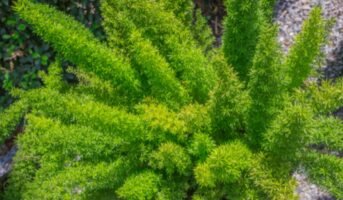In recent years, gardeners have increasingly turned to sedges as a versatile, evergreen perennial option for various parts of their yards. Often mistaken for ornamental grass, sedges belong to the Cyperaceae family, with many horticultural varieties falling under the genus Carex. With over 2,000 Carex species globally, particularly in regions like New Zealand, Japan, and the United States, these low-maintenance, deer-resistant plants have become a staple in gardens, adapting to diverse environments from dry shade to boggy areas. Let’s delve into the key facts, varieties, and essential tips for growing and caring for sedges.
Sedge: Key facts
| Name | Carex |
| Common Names | Sedge, blue grass, pink grass, spire grass |
| Family | Cyperaceae |
| Plant Type | Perennial |
| Soil | Moist, well-drained (chalk, clay, sand) |
| Temperature | Zones 3-9 |
| Sunlight | Part Sun, Shade, Sun |
| Flowers | Insignificant flowers, often in clusters |
| Height | 6 to 48 inches |
| Width | 18 to 24 inches |
| Foliage Colour | Blue/Green |
| Leaves | Evergreen, various colours |
Sedge: Physical description
Sedges, often mistaken for grass, boast evergreen leaves that pair well with other ornamental grasses. Growing in clusters, they exhibit a range of colours, from light green to bronze and caramel. An excellent addition to any garden, its varied foliage—occasionally ringed with striking white or silver—provides winter appeal. Many sedges provide textural richness to the park with their small, spiky seed heads.
Sedge: How to grow it?
Growing sedge is a rewarding, low-maintenance task. Follow these steps for a successful Sedge harvest:
Where to plant sedge?
Sedges are highly adaptable, growing in various light and soil conditions. Consider the growth habit—some spread vigorously, making them excellent fillers between other plants, while clump-forming types stay put. Optimal locations protect from full summer sun, with ideal morning and afternoon shade. Once established, they are fairly drought-tolerant but look best with regular watering.
How and when to plant sedge?
Planting times vary by species, with cool-season sedges best planted in the fall and warm-season species adaptable to fall and spring planting. Spring and fall are ideal planting windows. Planting depth should keep the root crown slightly above soil level.
Soil and water requirements
Many Carex varieties prefer moist, well-draining soil rich in organic matter. Drip irrigation or soaker hoses are suitable for watering, and maintaining a layer of pine straw or pine bark mulch helps create an ideal environment.
Sedge: Care tips
Light
Sedges grow in all light conditions, from full sun to partial shade and shade, making them versatile choices for different garden settings.
Soil and water
While some sedges prefer evenly moist soil, others tolerate drought. They are adaptable to soil acidity, ranging from acidic to alkaline.
Temperature and humidity
With around 2,000 species, sedges flourish in diverse climates. Select species based on your region’s climate, ensuring they align with your specific temperature and humidity conditions.
Fertiliser
Most sedges do not require fertilisation. If needed, apply a balanced slow-release fertiliser following product label directions in early spring.
Pruning
Sedges require infrequent pruning, mainly if they appear ragged. Their slower growth compared to grasses adds to their appeal.
Potting and repotting sedge
Container planting requires compact varieties, well-draining soil, and regular watering. Repot when roots fill the container.
Sedge: Uses and benefits
Sedges serve as both specimen plants and lawn alternatives. Ideal for rain gardens, they prevent soil erosion and contribute to moisture regulation. Carex varieties, such as Carex elata ‘Aurea’ and Carex oshimensis ‘Evergold,’ have earned recognition for their ornamental value. Beyond aesthetics, historical uses include thermal insulation in footwear and diverse roles in Native American communities—from protective footwear to medicinal infusions and basket weaving.
Sedge: Pests and diseases
In general, carex plants are resistant to pests and diseases. Common issues include fungal infections like smut, rust, and leaf spot. Aphids and fungus gnat larvae may appear, signalling overly wet soil. Fortunately, deer and herbivores typically leave sedges untouched.
Sedge: Toxicity
Sedges are generally not toxic to humans or animals.
FAQs
Is sedge native to North America?
About 500 Carex species, roughly one-fourth, are native to North America.
Are sedges weeds?
It varies; while some, like nutsedge, are pesky weeds, many sedges are desirable ornamental plants.
What are the key benefits of using sedges in gardens?
Sedges prevent soil erosion, contribute to rain gardens, and offer ornamental value with low maintenance.
Can I plant sedges in full shade?
Yes, many sedges grow in full shade, making them suitable for areas under trees or on a property's north and east sides.
Do sedges attract deer?
Generally, deer and herbivores leave sedges untouched.
How do I control spider mites on sedges?
Control spider mites by spraying the plant with water or using insecticidal soap.
Can sedges be grown in containers?
Choose compact varieties, use well-draining soil, and water frequently during the growing season.
Are sedges resistant to rust?
While sedges can be susceptible to rust, removing infected leaves and avoiding overhead watering helps prevent its spread.
Do sedges require frequent pruning?
Infrequent pruning is sufficient; they grow slower than grasses.
What are the cultural uses of sedges?
From Native American communities to horticulture, sedges have cultural significance, ranging from protective footwear to medicinal uses and basket weaving.
| Got any questions or point of view on our article? We would love to hear from you. Write to our Editor-in-Chief Jhumur Ghosh at jhumur.ghosh1@housing.com |
Priya Banerjee, a writer with a keen eye on the property market, she deciphers the ever-changing trends in residential real estate. Priya excels at simplifying complex real estate terms, making them easy for everyone to understand. Her well-researched advice helps buyers and investors understand complex topics.












